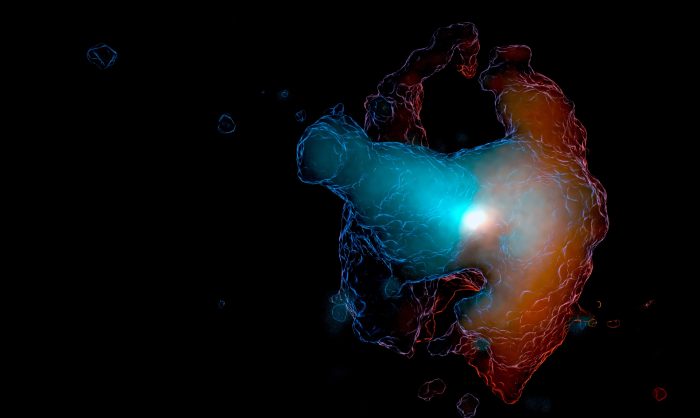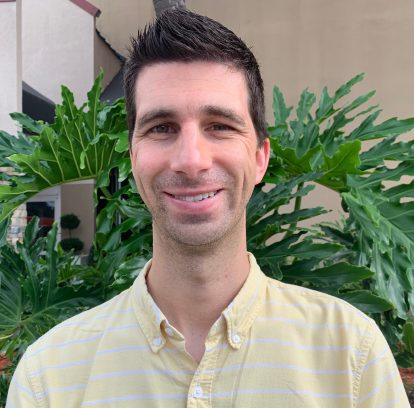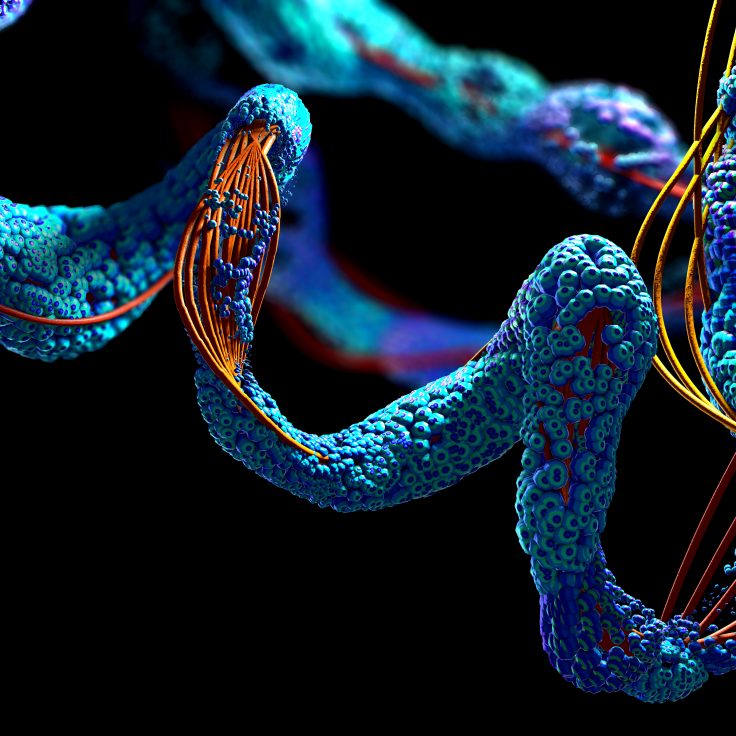
An international team of researchers that includes UF astronomy lecturer Paul Sell has discovered a massive, glowing bubble of gas surrounding a galaxy that reveals the importance of galactic winds, rendered in the image above.
UF Astronomer Helps Discover Huge Nebula Formed by Galactic Winds
UF astronomy lecturer PAUL SELL is among an international team of researchers who have discovered one of the largest nebulae ever observed around a merging galaxy. Their findings, published in Nature, reveal the importance of galactic winds in the space between galaxies.
The astronomers discovered the massive, glowing bubble of gas surrounding a galaxy they have named “Makani,” the Hawaiian word for wind. The nebula formed as galactic winds carried large amounts of metal-enriched gas into the expansive “reservoir” between galaxies, known as the circumgalactic medium.
The team, led by David Rupke of Rhodes College, observed galactic winds in a glowing halo of oxygen that reaches extreme distances — more than 20 times Makani’s stellar radius.
This huge outflow, the researchers believe, has been driven by bursts from a compact group of aging and dying stars. Merging galaxies, formed by two once-separate galaxies coming together, produce a large number of stars in a short time within a small space. The heaviest among them quickly die, rapidly pushing gases out of the galaxy.

The findings help explain how metals can be displaced into the far reaches of space.
“What is also remarkable is that the aging and dying stars appear to be powerful enough on their own to do all of the work without the need for a supermassive black hole’s help,” Sell said. “However, we expect one to be buried down in the center of the merging galaxies, maybe quite literally under a lot of dust and gas.”
Sell, who worked as a researcher at the Foundation for Research & Technology at the University of Crete before coming to UF, contributed imaging from the Hubble Space Telescope and super massive black hole analysis. His collaborators also collected data from the W.M. Keck Observatory’s new Keck Cosmic Web Imager instrument and the Atacama Large Millimeter Array.
The research team has been studying a large set of similar galaxies and will be gathering further observations using some of the world’s most sensitive telescopes.
The study was supported by the National Science Foundation, NASA, Rhodes College and the Royal Society.

You can read more about the researchers’ findings here.


